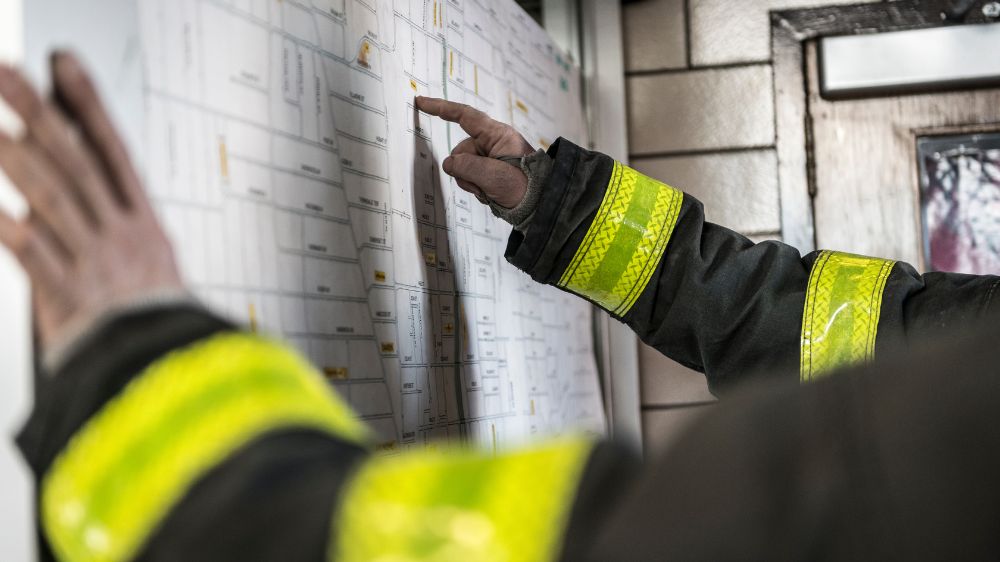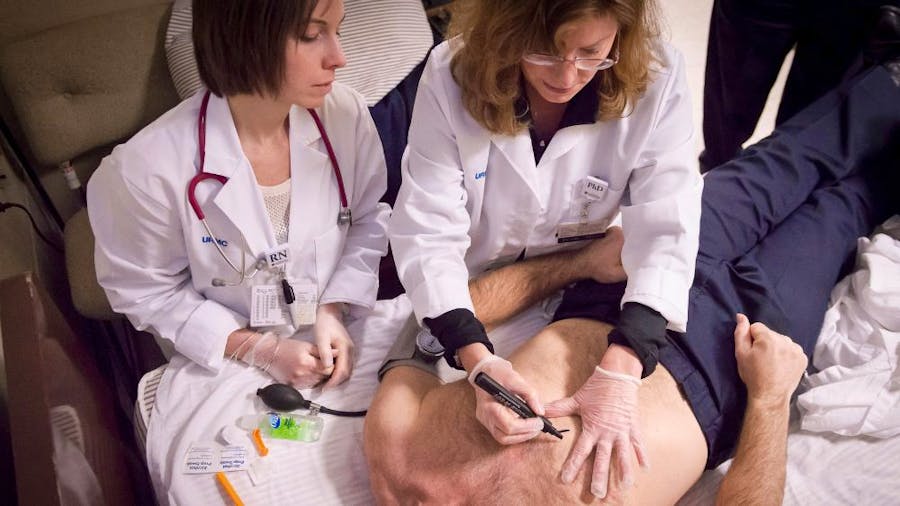Firefighters Face High Risk of Cardiac Events. AI Can Predict Them, With Help from UR Nursing Research
By Gianluca D'Elia
Monday, January 15, 2024

This story is part of a series, Snapshots of Nursing Science, from the January 2024 issue of NURSING Magazine.
Firefighters risk their lives regularly, selflessly braving smoke and flames to save others. But neither fires nor smoke inhalation are the leading cause of firefighter fatalities. There’s an often-overlooked yet critical risk, that accounts for nearly half of deaths among firefighters: cardiac events.
Sudden cardiac events have taken the lives of more than 40 percent of U.S. firefighters over the past decade. An interdisciplinary team of researchers, including two University of Rochester School of Nursing scientists, is at the forefront of helping first-responders change the narrative. Utilizing artificial intelligence (AI), they’re hoping to help firefighters catch signs of cardiac events and seek medical attention before it’s too late.
A collection of data from Professor of Nursing Mary G. Carey, PhD, RN, FAHA, FAAN, made the study possible. She had already spent years studying cardiovascular health among firefighters in Rochester and Buffalo. About a decade ago, Carey and colleagues from the University at Buffalo collected 24 hours of electrocardiogram (ECG) data from 112 firefighters, who had electrodes strapped to their chests.

The ECG data encompassed 16-hour, on-duty shifts and eight-hour, off-duty shifts, during which the firefighters engaged in their daily activities, exercising, eating, resting, and sleeping.
This data paved the way for co-authors from the National Institute for Standards and Technology (NIST) and Google to develop a machine-learning model called “H2M” — short for heart health monitoring — that can accurately identify abnormal cardiac rhythms in firefighters. The team published their findings in a Summer 2023 issue of Fire Safety Journal.
“The firefighter data we collected is so unique,” said Assistant Professor Dillon Dzikowicz, PhD, RN, PCCN, a co-author of the study. “Having robust and real-world data is essential to move our work forward and protect firefighters.”
The H2M model can provide firefighters with immediate feedback on the status of their heart health to enhance situational awareness and safety. This can help reduce firefighters’ injuries and deaths caused by sudden cardiac events.
In the future, researchers hope to incorporate the model into portable heart-monitoring devices — picture a Fitbit, Apple Watch, or even a “smart” shirt with a sensor for ECG monitoring — and to extend its reach beyond firefighters.
“This technology can save lives,” NIST researcher Andy Tam said in a news story about the study. “It could benefit not only firefighters but other first responders and additional populations in the general public.”
The model has potential for far-reaching impacts, but it’s especially important at a local level, Dzikowicz said. New York has the highest rate of firefighter deaths, according to the U.S. Fire Administration, adding a greater sense of urgency for UR Nursing’s cardiovascular nurse scientists and their collaborators to move new discoveries forward.
They consider this work a sign of appreciation and a “thank you,” from one team of frontline workers to another.
“To me, it’s about helping the unsung heroes who we rely on every day in our community,” Dzikowicz said.

